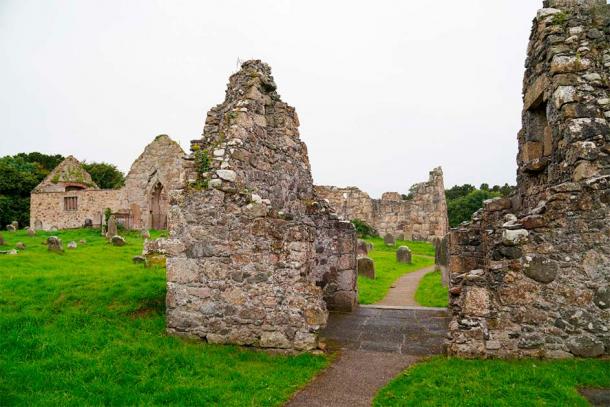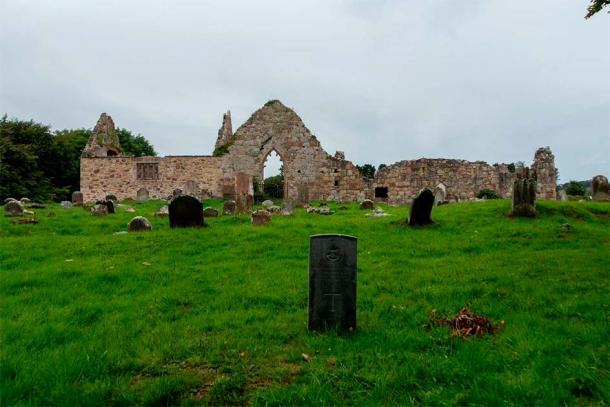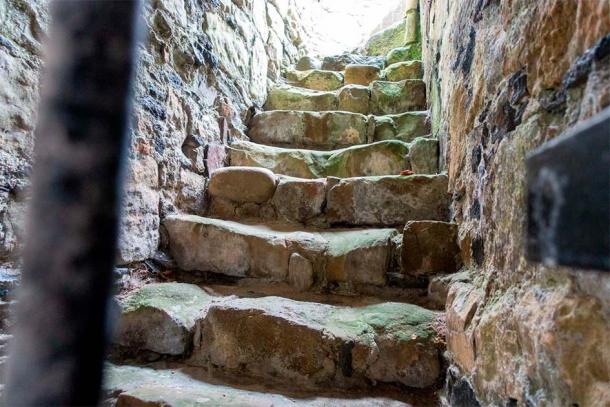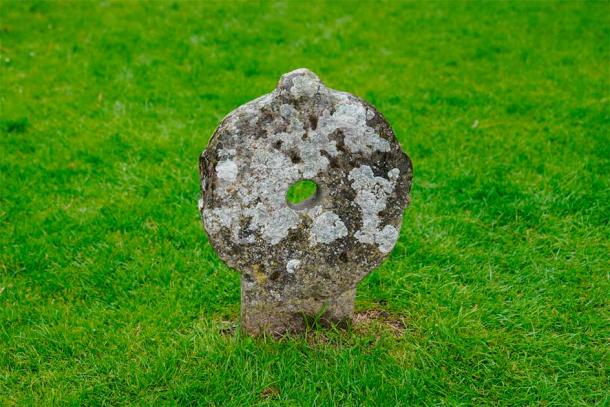
The Haunted History and Resting Heroes of Bonamargy Friary
Old ruins and abandoned places have always tickled the imagination. They’ve also been a primary source for local legends across the centuries. Ireland, thanks to its long and rich history, is full of such ruins, whether they be castles, churches, abbeys or fortresses. Situated in County Antrim, Northern Ireland, Bonamargy Friary is one such dilapidated site.
Located near Ballycastle, the Bonamargy Friary languished in a state of disrepair for numerous years, gradually evolving into the focal point of unsettling folklore. Its tales encompass everything from eerie black nuns to accursed steps and beyond. Remarkably, amidst all these spooky narratives, the friary continues to serve as the final resting place for numerous significant figures from Irish history.
Bonamargy Friary Through the Tumultuous Centuries
The Bonamargy Friary was founded in 1485 by Rory MacQuillan, who was the chief of the Clan MacQuillan. It was established as a Franciscan friary, an order known for its dedication to simplicity, poverty and the preaching of the Gospel. The friary served as a place of worship, learning and refuge for the local community and pilgrims.
Throughout its history, the friary faced periods of turmoil and destruction due to various conflicts and political changes in the region. It survived multiple attacks during the 16th century as part of the Dissolution of the Monasteries initiated by King Henry VIII.
- For Sale: Abandoned Scottish Village “Haunted By A Seer”
- Loftus Hall: Most Haunted House in Ireland Has Not Revealed All Its Dark Secrets
Despite these challenges, the friary continued to be a prominent religious institution. The original friary was dissolved in 1584 and the building was subsequently burned in 1589, at a time when it was being used by the British army. Luckily, the friary was later repaired and by 1626 it became a base for missionaries once more.
The architecture of the Bonamargy Friary showcases a mix of medieval and Gothic styles. The site includes a church, living quarters, a cloister, a chapter house and a cemetery. The friary's remains provide valuable insights into the life and practices of the Franciscan community during the medieval period. Although remnants of the Bonamargy Friary's structures still stand, a significant portion of this ancient monument now rests in a state of ruin.

Bonamargy Friary. (Ioannis Syrigos)
Sorley Boy’s Foothold in Ireland
Bonamargy Friary is the resting place of some truly famous figures. Of these, the most renowned is certainly Sorley Boy MacDonnell (Somhairle Buidhe Mac Domhnaill, 1505-1590), a Scottish Gaelic chieftain. The son of Alexander Carragh MacDonnell, 5th of Dunnyveg, of Dunyvaig Castle, lord of Islay and Cantire, Sorley Boy rose to prominence when he established a branch of the Scottish Clan MacDonell in Antrim, Ireland.
His foothold outside of Scotland was quickly challenged by Irish Clans, chiefly the MacQuillans and the O’Neills. As a result, Sorley Boy and the men of his clan fought several hard battles in the north of Ireland. Many were fought close to Bonamargy Friary.
The foremost of these battles was Battle of Aura, fought in April, 1583. Here, Sorley Boy withstood an assault by McQuillans near Bonamargy and later retaliated near Slieve-na-Aura, some 14 kilometers (9 mi) away. Despite being outnumbered, Sorley Boy won a series of brutal clashes and defeated his enemies in Ireland, securing his clan’s lands and his foothold there. He lived to the ripe age of 85, and was laid to rest at Bonamargy Friary. His remains are still there, within a locked burial vault, as are the remains of several notable Earls of Antrim.

Bonamargy Friary. (William Alexander)
The Prophetic Black Nun and the 13th Step of Bonamargy Friary
But perhaps the most famous resident of Bonamargy Friary is without a doubt the 17th century recluse and prophet Julia MacQuillan. Also known as the “Black Nun,” MacQuillan lived alone at the friary when it was abandoned in 1641. It is said that this reclusive woman could foretell the future, since some of her supposed predictions did come true centuries later.
The Black Nun died under mysterious circumstances. According to one legend, the Black Nun of Bonamargy Friary fell from the top window of the friary. Another legend claims that she was murdered on the 13th step leading to the upper floor. This tale endures, with lingering beliefs that bad luck and misfortune awaits those who tread upon the ill-fated 13th step.

The steps leading to the upper floor of Bonamargy Friary, where legends say the Black Nun was murdered. (William Alexander)
Before her death, MacQuillan expressed her wish to be buried at the very entrance to the chapel at Bonamargy Friary so she could be stepped upon by those who entered it. This was a proof of her humility. Her wish was granted and her grave is today marked by an odd stone, resembling a worn down Celtic cross with a hole inside it. Many say that the ghost of the Black Nun haunts the Bonamargy Friary to this very day.
- Brave Enough To Spend A Night in England’s Most Haunted Prison?
- Queen of Sweden Says Her Old Palatial Home is Haunted by Friendly Ghosts
In the centuries after its final abandonment and ruin, the Bonamargy Friary did not stop yielding treasures. Around 1822, an old oaken chest containing four precious religious manuscripts was discovered in the ruins. Some were old, dated to 1338, and proved to be a very valuable find.

The tomb of the Black Nun. (William Alexander)
As a historical and cultural landmark, Bonamargy Friary is open to visitors who are interested in exploring its history and architecture. The site is managed by the Northern Ireland Environment Agency and guided tours are often available to provide visitors with a deeper understanding of the friary's significance. Anyone can come visit and pay their respects to the great heroes and earls that are laid to rest here. Stepping through the ruined doorways and entering the friary, one cannot fail to feel the call of centuries past.
Top image: Aerial image of Bonamargy Friary in Northern Ireland. Source: peter / Adobe Stock
References
HIll, M. J. 2016. Fire and Sword: Sorley Boy MacDonnell and the Rise of Clan Ian Mor 1538-90. Crown Rights Book Company.
Unknown. 2022. “Bonamargy Friary” in Spirited Isle. Available at: https://spiritedisle.ie/explore-listing/bonamargy-friary/
Unknown. 2023. “Bonamargy Friary – Ballycastle” in Discover Northern Ireland. Available at: https://discovernorthernireland.com/things-to-do/bonamargy-friary-p675001















